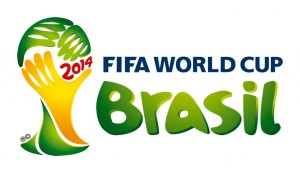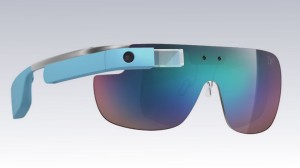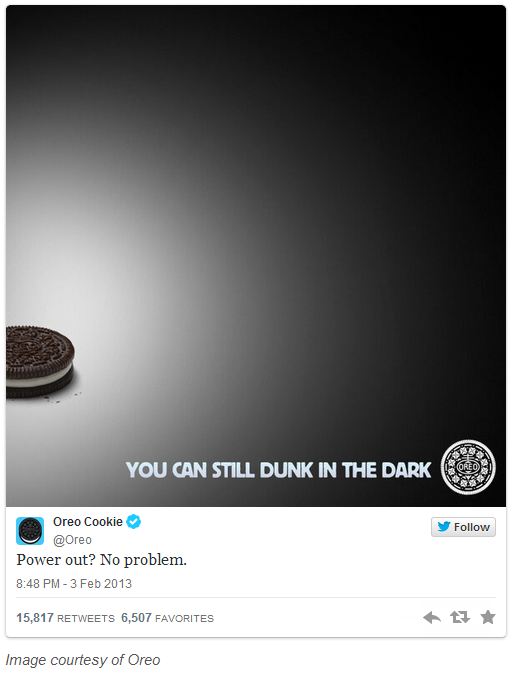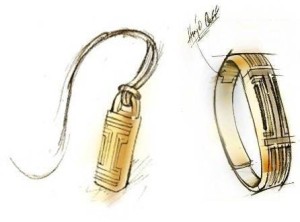How to Leverage Social Media for Your Brand
There are a number of social media best practices to keep in mind related to leveraging social media for your brand, many of which center around the idea that keeping the “social” in social media, an often-forgotten but very important aspect.
Let’s start there – social media, at its essence, is a conduit for conversation. But many brands forget this aspect of social media marketing, and treat their channels as one-way communication platforms, pushing their messages out and  virtually ignoring all incoming communication from their fans.
virtually ignoring all incoming communication from their fans.
Actively engaging its customers is one way to personify your company’s brand, giving it more of a “human” identity rather than one of a faceless corporation. This humanization of a brand has been shown to play a positive role in potential consumer decisions.
Engagement can be both positive and negative. Positive posts can include pushing out conversational content and responding to positive feedback from fans. But responding to negativity is also important, if not more, to effective social media engagement. Responding to negative posts in a timely and polite manner can help calm the poster, and also prevent any potential crisis from forming over a negative situation.
A great rule of thumb to keep in mind is the “one-in-seven rule.” As discussed by Chris Litster of Constant Contact, this rule states that companies should only overtly promote their business in one of every seven posts. The remaining six should be focused on valuable content sharing for their audience. Pairing promotions with solid content extends the reach and engagement level of your posts with your audience.
Generally speaking, people pay more attention to content that interests them than they do standalone promotions, which tend to fly more under the radar of the audience. If you follow this rule, even with some leeway, your brand will be more recognizable to the audience due to your habit of sharing great content. This way, when you do post a promotional message, it is less likely to be overlooked.
Social media best practices tend to revolve more around what a brand shouldn't do rather than what they should.
First, a word of warning when creating posts centered around social media trends – proper research is necessary to avoid creating a crisis for your organization. For instance, in 2012 the hashtag #Aurora was trending because of a mass shooting that occurred at a midnight showing of The Dark Knight Rises in Aurora, Colo. The day after this tragedy, the company Celebrity Boutique tweeted the following message: “Aurora is trending. It must be because of our Kim K. inspired Aurora dress”
Following the understandable and considerable uproar, the company released a statement saying they did not check what background of the social media trend for “Aurora” was prior to composing the message. Had the company done their due diligence and performed seemingly simple research, they could have avoided this unfortunate situation rather easily.
Additionally, the goal shouldn't revolve around “going viral.” Taking a viral marketing focus has such a small rate of success that attempting to find positive ROI will prove difficult. There is a reason why viral posts carry the social and cultural weight they do – the attention comes due to their rarity. Just like everyday occurrences don’t warrant substantial news coverage, the dime-a-dozen nature of viral marketing attempts fall by the wayside unless they contain a truly memorable and differentiating aspect.
When used correctly, social media marketing can be a valuable tool to leverage your brand. In today’s society, a company that knows how to use this resource to its advantage holds an important leg up on the competition, and puts itself at the forefront in the minds of consumers.
Sources:
https://mashable.com/2012/07/20/celebboutique-misguided-aurora-tweet-sparks-twitter-outrage/
Adidas vs. Nike, Which Brand Really Won The World Cup?
Adidas vs. Nike, Which Brand Really Won The World Cup?
Guest Blogger: Lindsey Freedman
The FIFA World Cup, like all large scale sporting events, is every brand’s dream platform. It gives a brand the potential to be recognized on a global platform while influencing the opinions of millions. The 2014 FIFA World Cup was no different-over $400 million were spent on marketing during the tournament.
What makes the 2014 World Cup so different than past years is that brands have to focus on reaching target audiences across multiple platforms. Jason Klein, ListenFirst’s co-founder and Co-CEO, said, “More than ever before, this year's World Cup forced brands to think beyond a single platform and instead take a cross-channel approach to engaging fans throughout the tournament."
Adidas and Nike were the most competitive brands across the multiple online platforms during the 2014 World Cup, despite the many sponsors that included McDonalds, Coca Cola and Sony. What’s so interesting about Adidas and Nike is that Adidas was a 2014 World Cup sponsor, while Nike was not.
Below are some notable reasons why Adidas and Nike were the “winning” brands of the 2014 FIFA World Cup:
Adidas:
For the past 66 years, Adidas has been the leader in soccer products. So, their World Cup sponsorship makes sense for the brand. Adidas was no doubt the most notable sponsor of the World Cup. Their signage and logo were prominently displayed throughout all the stadiums. They even inspired athletes with their “Now or Never” signage that intensified throughout the matches. Adidas also created a Twitter campaign for @Brazuca, the 2014 FIFA World Cup official match ball. Throughout the tournament the account grossed 3.5 million followers. Additionally, both World Cup finalists, Germany and Argentina, were sponsored by Adidas.
Nike:
Nike, on the other hand, was not a 2014 World Cup sponsor but their presence was well known. Their brand strategy was to sponsor multiple teams and distinguished players for the World Cup. However, Adidas happen to pick the right teams to sponsor in terms of the World Cup final. Furthermore, Nike’s “Winner Stays” video, that featured multiple renowned athletes such as Cristiano Ronaldo, Wayne Rooney and Tim Howard, reached more than 4.2 million views.
ListenFirst, a social analytics company, tracked the growth of brands during the course of the tournament through impacts on social communities, including Facebook, Twitter, Instagram and Youtube. Adidas scored a 90.4 while Nike scored a 83.4 indicating that both brands enjoyed substantial and comparable growth throughout the 2014 World Cup. According to the data Adidas was the most talked about brand on Twitter, whereas Nike scored big on Youtube views.
But overall, if a winner had to be declared - we’d say we have got a tie. Despite the millions of dollars spent on Adidas and Nike’s campaigns, they both scored a larger audience that they will be able to influence year-round.
On a side note, Tim Howard, USA goalie, has become a powerhouse brand. He gained over half a million Twitter followers during the World Cup and at one point he was mentioned 55,187 times a minute during the match against Belgium. Howard is in talks with several brands for multi-million dollar sponsorship opportunities, according to a recent interview with ADWEEK.
The FIFA World Cup is definitely one of our favorite events. No one wants to wait another four years, but we look forward to what brands bring to the 2018 World Cup in Russia.
###
Sources:
"The 10 World Cup Sponsors That Grew the Most in Followers, Fans and Subscribers"- Ad Age
"Adidas won the World Cup battle, but Nike is winning the soccer wars"- Quartz
"Three Brands That Won At The World Cup" - Forbes
"World Cup Hero Tim Howard Talks About Sudden Fame Being a role model is part of the package" - ADWEEK
Build Equity in Your Personal Brand
Build Equity in Your Personal Brand
By Guest Blogger: Lindsey Freedman 
Today as I walked into work, I couldn't help but notice the Starbucks cup in my hand, the iPhone I was texting on and the Nike fuel band on my wrist. As a society we are fixated with brands; we are walking advertisements for the brands we love. However, do these certain brands define our own personal brand?
Personal branding is a phrase that has been tossed around a lot lately. But what is it? Is it the items we associate ourselves with, or the profiles we manage on the internet? Forbes says, “Your personal brand is all about who you are and what you want to be known for.”
To be competitive in today’s work force a personal brand is essential. Personal branding is more than a strategic social media presence. It is defining who you are and what your goals are while establishing authenticity. “Authenticity is as essential an ingredient to personal branding as eggs are to omelets,” says William Arruda, a Forbes contributor.
A personal brand is important because it advances careers, develops leadership and builds equity. A Forbes survey determined that 15 percent of employees have truly defined their personal brand, while 5 percent are living their brand every day at the workplace. Glenn Llopis, a Forbes writer, says that living through the “lens of the brand” will help one become aware of their presence.
To positively construct your personal brand there are a number of factors to consider and business objectives to define. Below are just a few tips for establishing your personal brand:
1. Discover your brand mantra
A brand mantra is the “heart and soul” of your brand according to professional Kevin Keller. It is an important step in defining your personal brand. A brand mantra is reminiscent of a mission statement. An example would be Oprah Winfrey: “an American television hostess, entrepreneur and avid gardener”. This will help define the foundation of your brand and your intended message.
2. Create your brand
Creating a personal brand includes executing paper and online initiatives. It is important to examine all social media platforms and create a consistent voice and message. According to Career Builders, 48 percent of employers Google candidates’ online portfolios and social media platforms. Additionally, 51 percent of employers have not hired a candidate because of their social media profiles, according to Bloomberg Business Week. Therefore, online portfolios that are strategic and consistent are more important than ever. The same idea goes for print work that includes cover letters, resumes and business cards. A consistent message across multiple platforms will only enhance your personal brand’s identity.
3. Invest in your own brand
After determining your brand, it is important to be consistent and believe in your message. “In fact, those who have defined and live their personal brand will more naturally demonstrate executive presence and as such may find themselves advancing more quickly at work,” says Llopis. Executing your brand consistently is a leadership quality and will help define your career and goals moving forward.
For more tips on personal branding examine the A,B,C’s of Personal Branding infographic provided by Placester and Feldman Creative. Here at Addison Whitney we love watching brands become successful and thrive. So why shouldn't your own personal brand gain the same benefits?
###
Sources
"The First Step to Building Your Brand"- Forbes
"Personal Branding Is A Leadership Requirement, Not a Self-Promotion Campaign"- Forbes
"7 Questions To Ask When Uncovering Your Personal Brand"- Forbes
"New Survey Reveals Job Interview Stats: 48 Percent of Employers Google Candidates"- Media Bistro
"Number of Employers Passing on Applicants Due to Social Media Posts Continues to Rise, According to New CareerBuilder Survey"- Bloomberg Buisnessweek
Brand Collaborations: The Innovative Movement in Branding
Brand Collaborations: The Innovative Movement in Branding
Guest Blogger: Lindsey Freedman
Google Glass & Diane von Furstenberg, Starbucks & Duracell, Hershey & Betty Crocker, are all examples of popular brand collaborations. As discussed in our previous post on Fitbit and Tory Burch, brand collaborations are occurring more because of the potential effects on brand equity and expanding target audiences.
According to Michelle Greenwald of Inc., this trend began in the 1990s when Lexus offered interior options by famous fashion retailer, Coach. Fast forward to 2014 and this trend now expands through numerous industries including retail, cosmetics, healthcare, food and more.
Brand collaborations, or partnership marketing, provides exposure across multiple brand channels and expands target audiences. The study also shows that co-branding enhances brand positioning, challenges perceptions and advances brand equity.
For example, a recent study by Mediator, a London- based agency, revealed that 80 percent of respondents consider collaborations a high return on investments. Furthermore, 83 percent of respondents agree that collaborations are overall effective.
To successfully collaborate with another brand there are a number of factors to consider and business objectives to define but below are some tips for valuable co-branding endeavors:
1. Align your corporation with a comparable organization.
The most successful brand collaborations involve corporations that share similar visions. Mutual interests create an authentic relationship that is easily received by target audiences. For example, Apple and Nike’s Nike +iPod Sports Kit fulfilled a deficit in the fitness market. Both corporations are leaders in their respective industries, thus their collaboration expanded audiences. As of 2013 there were 18 million Nike+ users and the collaboration has been on-going since 2006.
“Look for brand fit not only from the perspective of attributes and benefits but also with respect to core values and corporate philosophies,” said Steve McKeee, President of Mckee Wallwork and a Bloomberg Business columnist
2. Outline goals that compliment both brands.
A clear set of goals will guide and organize the business endeavor. Also, mapping out shared interest will focus the collaboration. It is important to develop goals and guidelines that align with your own business practices and ethics. This will help create a swift transition and protect your own brand. A great tool is a co-branding manual; many corporations, such as AT&T, have co-branding guidelines to help direct managers.
3. Use brand collaborations cautiously and sparingly.
Research is the key to creating valuable brand collaborations. Brand collaborations have the potential to be unbelievably successful and develop further brand equity. However, if executed incorrectly they can have a dramatic effect on your audience’s perceptions. Research is important when aligning with another organization to avoid negative partnerships.
Co-branding endeavors add a level of engagement that traditional communications strategies are not able to provide. They create a powerful effect across multiple marketplaces. Do you think this trend strengthens brand equity, or will this movement soon fade out?
###
Sources
"Whitepaper by Mediator"- The Drum
"Twenty Co-branding Examples" - Bloomberg Business Week.
"The Pro's and Con's of Branding"- Bloomberg Business Week.
"The Secrets of Successful Co-Brands"- Inc.
"4 Lessons on Co-Branding To Co-Crush The Competition"- The Fast Company
"18 Million People are Using Nike+ to Track Their Fitness"- The Fast Company
Real-Time Marketing: Making It Work For Pharma Branders
Real-Time Marketing: Making It Work For Pharma Branders
Let’s start by creating a baseline for this topic. What is real-time marketing (RTM)? Of all the attempts to define this marketing strategy, a blog post from Evergage sums it up quite nicely: RTM is “…the practice of brands engaging their audience via content, advertising, and product placement that is relevant to a specific current event or cultural happening. The content is most often in the form of a “meme” or graphic advertisement shared through social media channels.”
An easy example? Oreo’s infamous tweet during last year’s Super Bowl.
When we start to look at RTM (sometimes referred to as viral marketing) through a healthcare lens, we need to dig a bit deeper. Pharmaceutical branding is inherently complicated. The industry is overflowing with rules, regulations and guidance – all of which make marketing a bit challenging. And because of these parameters, real-time marketing, as explained by Evergage, seems somewhat elusive.
But, it really is all about perspective. Mashable frames it up a bit differently.
“…real-time marketing success starts with a brand's day-to-day activity, not a single well-timed moment. Don't swing for the fences your very first time out. Implement small, real-time marketing initiatives on a regular basis; patiently teach your audience they can expect timely, relevant communications from your brand. Then, when a really big opportunity arises, your team is poised and ready to make the most of it.”
When considering in Mashable’s frame of reference, RTM and pharmaceutical branding seem to better coexist. This tactic becomes less about a cute response and more about being responsive – and proactively so. Pharmaceutical companies face an unfathomable number of questions from a variety of audiences – and comprehensive, strategic marketing efforts can go a long way to answering a lot of them before they’re even asked.
Pharma branders can utilize RTM by identifying opportunities that work within the confines of their industry – and by viewing those parameters as guideposts, rather than obstacles. A program like TEDMED is a great example of such an opportunity TEDMED brings together like-minded industry professionals and gives them a variety of platforms to promote their brands. Brands can use all of the tools of RTM to tell their story while they attend (or even just live stream) this kind of conference.
And, in order to succeed at RTM, you have to get comfortable with learning as you go along. The fundamental tactics of this type of strategy are content, social channels, mobile and video. Can’t focus on all four areas? Then specialize in one and grow from them. But, the key to real-time marketing is responsiveness – build a program around that and you’re more than on your way to a successful campaign.
# # #
Sources
“Real-Time Marketing Isn’t What You Think It Is,” Evergage.
“Someone Give This Oreo Employee A Raise,” Mashable, Feb. 3, 2013.
“4 Steps to Explosive Real-Time Marketing,” Mashable, July 15, 2013.
“Real-Time Marketing Opportunities in Healthcare?,” brandgagement, May 7, 2013.
“2014: The Year of Digital Pharma?,” Pharmaceutical Executive, Jan. 23, 2014.
Taking Your Brand Online
Taking Your Brand Online
By: Ashley Wiederhold
The Internet is really quite a fascinating space. You can find virtually any piece of information that you may need online—and this includes information about companies that you may be considering working with. Anyone, at any time, can do a quick Google search of a business name and gain access to the company’s website, social media feeds, blog, etc. Basically, any online asset that a company has can be uncovered by the right Google search.
If your business has great branding in place, this is fantastic! Each and every webpage that features your company supports its message (if these pages are branded correctly). But for those businesses that have overlooked branding? Or have  overlooked how to best take their brands online? This can be challenging.
overlooked how to best take their brands online? This can be challenging.
The key to creating a brand that will successfully translate to the World Wide Web lies in preparation. Below are some of the ways in which you can ensure that you build a brand message that can be easily applied online.
- Think about the name. On brand name development projects, any good branding firm will do a preliminary Google screening of your potential name candidates, thereby weeding out the names that may already be taken or associated with ideas, events, people, companies, etc. When considering names, do your own Google searches to make sure that nothing in the search results will hinder the effective communication of the brand you’re building.
- Remember that consistency is key. Online marketing is essential in today’s world, but it’s only effective if you use your brand to create a high degree of recognition. This means that members of your target audience will recognize your company based on the logo, the tagline, etc. To achieve this, it’s important to keep in mind the fact that your brand message will be spread across many platforms. From a blog to social media to the business’ website, your branding materials need to be consistent.
- During the creation of your brand you should identify your target audience, as well as its values, priorities, etc. Use this information to shape your company’s Internet-based marketing efforts. Keep the brand you are building, as well as your online marketing goals, in mind in order to create a message that resonates with the target demographic.
Source:
Is Brand Power Waning? (Part Two)
Is Brand Power Waning? (Part Two)
Guest Blogger: Ashley Wiederhold
Many industry leaders have long expected brands to lose their power as consumers become increasingly knowledgeable about their products, services, and behind-the-scenes activity, thanks to the World Wide Web. As an article published by the Harvard Business Review so aptly explains: “The case for the decline of big brands follows a strikingly clear logic: The primary role of a brand is to make it easier for consumers to choose which products to buy. If consumers have immediate access to information that helps them make those decisions[,] such as user reviews and expert opinion, the value of a brand will fall.”
At first glance, this may seem to be a strong argument. Think about it: When do you rely on brands? Perhaps when you are shopping for something and don’t know much about the product (i.e., you buy a Dyson because of brand recognition and reputation, not because you’re a vacuum cleaner expert) or when you’re in a hurry and don’t have the time to do your research (i.e., you need to quickly pick up a can of green beans and simply grab the variety you recognize).
But, as the aforementioned article points out, the Internet, which is the primary location of the information that consumers access when making key financial decisions, is also highly brand-driven: “As digital disrupts more marketplaces, brands become more important and more valuable. Take a look at the various brand rankings: Digital brands such as Apple, Google, Microsoft, IBM, Intel, and Samsung are in the top 10 of most rankings […] If brands are truly unimportant in a digital world, why is it so brand dominated? Why do so many people choose Google search over Bing when only experts can tell which has the most accurate results?”
The strong power that brands wield is, of course, the answer. But instead of leveraging traditional branding and marketing tools, today’s companies need to take their brand image online. The article puts it perfectly: “It’s about providing meaning and satisfying emotional needs. These fundamental human needs have not changed.” But the ways in which companies are able to meet these needs have changed—and drastically. Meeting these needs is now largely achieved via the Internet, rather than traditional advertising methods.
Before wrapping this up, it’s important to touch on one more idea, which was discussed in part one of this two-part defense of brand power. Because consumers have access to so much more information, it’s critical that companies uphold the brand image that they create by acting upon the values, mission, and attributes that they have chosen for their brand to represent. The article corroborates this, stating: “In a hyper-transparent digital world, consumers instantly know the difference between what a company says and what it does.”
The moral of this two-part story? Brands are important—nay, essential—in the Internet Age.
# # #
Source
"Brands Aren’t Dead, But Traditional Branding Tools Are Dying," Harvard Business Review
Is Brand Power Waning? (Part One)
Is Brand Power Waning? (Part One)
Guest Blogger: Ashley Wiederhold
An article in The New Yorker has raised some interesting questions: Despite all of the money, time, and energy that businesses invest in their brands, is brand power a thing of the past? Is the influence of a positive, strong brand waning?
The argument put forth by the author of the article is that brands have become less important as consumers have become better informed. The article reads: “It’s a truism of business-book thinking that a company’s brand is its ‘most important asset,’ more valuable than technology or patents or manufacturing prowess. But brands have never been more fragile. The reason is simple: consumers are supremely well informed and far more likely to investigate the real value of products than to rely on logos.”
The article goes on to assert that today’s consumers have access to “reams of research about whatever they want to buy.” Ultimately, the author argues, the Internet has provided an avenue through which consumers can read reviews, reports, research, and other data about companies and their products—and that these pieces of information, more than any brand image, shape consumer behavior.
It is certainly true that today’s consumers have the ability to read up on just about any product, service, or company that they choose. But to say that this is weakening brand power is to overlook the fact that today’s companies can use the Internet to strengthen a brand’s image, rather than allow the World Wide Web to detract from it.
When used correctly from a marketing standpoint, the Internet is an invaluable platform upon which businesses can build their brand’s image. Through websites, blogs, online articles, social networking sites, etc., today’s companies can spread information about their offerings, their values, and their mission on a larger scale than ever before.
But let’s take a second to look at the argument that the article asserts. Brand power can wane with an increase in consumers’ access to information if that brand is built upon nothing but a logo and a tagline. The key to strengthening a brand in today’s information-centric world is to understand that a successful brand should encompass more than a visual identity. It should borrow from and build upon:
-- The company’s reputation
-- The characteristics that make the company unique
-- The emotional impact that the company has on its target audience
-- How customers experience the products and services that the company has to offer
When approached this way, it’s easy to see how Internet-based content—online reviews, social media activity, etc.—can actually help strengthen a brand image. But this is only possible if the company in question upholds the values, mission, and other attributes with which its brand is associated. Otherwise, the loyalty of consumers will wane—just as brand power will deteriorate—as people start to understand that the image a company puts forth is not an accurate representation of the business. Now, more than ever, it’s imperative for companies to build brands that they can stand behind.
# # #
Source
"Twilight of the Brands," The New Yorker
Fitbit, meet Tory Burch. Tory Burch, meet Fitbit…?
Fitbit, meet Tory Burch.
Tory Burch, meet Fitbit…?
More and more, companies are partnering to bring products and services to consumers that cross socioeconomic, demographic and psychographic lines. Sometimes, bringing two companies together not only reaches a larger audience, but it exponentially builds their brands. Think Apple and Nike, Eddie Bauer and Ford, The Global Fund (Red) and GAP (along with other brands, including Apple, Hallmark, Converse and Dell) and Isaac Mizrahi and Target.
Earlier this year, and on a more unconventional note, Fitbit and Tory Burch announced a partnership: The Tory Burch for Fitbit accessories collection.
In one hand, you have Fitbit, a pioneering maker of health and fitness tracking gear. The NPD Group now says Fitbit has 77 percent of the market for full-body activity trackers despite intense competition from Jawbone, Nike’s Fuelband, and others.
In the other, there’s Tory Burch, an American lifestyle brand with more than 100 freestanding boutiques and a presence in more than 1,000 department and specialty stores. The collection, known for color, print and eclectic details, includes ready-to-wear, shoes, handbags, accessories and beauty.
In this fashion meets fitness venture, Tory Burch has designed pendants, bracelets and wristbands that will hold the Fitbit Flex tracker (see images below).
The skinny? Well, the Fitbit Flex retails for $100, but Tory’s jewelry ranges from $50 to $595. And, one of the brand elements that seems to resonate with Fitbit products is their wearability and durability, which seems a little bit at odds with Tory’s classics.
The real question here is, will existing Flex owners buy into the accessory options from Tory Birch, or just stick with the basic plastic bands?
And, on the flipside of this thinking, could Fitbit welcome an entirely new, more affluent audience through this partnership? After all, the pendant and bracelet options are much more attractive for going out.
Either way, I can’t wait to see the finished products (hopefully in silver, too!), and once it launches, watch this unique partnership grow.
# # #
Sources
“Twenty Co-Branding Examples,” Businessweek.com, https://goo.gl/S6Uoy
“How Fitbit Survived as a Hardware Startup,” Forbes.com, https://goo.gl/NbSNpf
“Buzz,” Fitbit.com, https://goo.gl/YGcM8n
“About the Company,” ToryBurch.com, https://goo.gl/SGcIkr
IBM: Building a Lasting Brand
IBM: Building a Lasting Brand
Guest Blogger: Ashley Wiederhold
It’s easy to take today’s big brands for granted; while we can see the process of small businesses developing their brand identities, it’s often assumed that large companies are large companies because they’ve nailed down successful brand strategies (among other things). But these big businesses certainly have journeys all their own—and IBM is a wonderful example of how the right brand strategy can keep a company from crumbling.
An article published by Forbes features an interview between Allen Adamson, a contributor to the publication, and Randy Golden, a former senior corporate staff member at IBM. Golden spent more than two decades working with the company, and his role within the brand architecture and design group allowed him to support the forging of a lasting brand for the IBM Corporation.
To set the scene: IBM was, in 1993, facing collapse. With an $8.1 billion loss, the company had to let go more than 100,000 employees. Ultimately, the problem stemmed from the disorganized brand that IBM had become. While it was built according to a celebrated business strategy (“the promise of a globally integrated enterprise with integrated solutions”), the organization suffered from redundant processes, different internal marketing and advertising approaches, information systems that were disconnected, and more. The brand was, to put it simply, fractured.
To put the company back together, IBM hired Lou Gerstner, who was the former president of American Express and CEO of RJR Nabisco. Instead of facilitating the simple and timely dismantling of the business, which was assumed, Gerstner decided to unite all of the brand’s identities under one brand strategy. To do so, Adamson explains, “He understood that IBM’s inherent strength was in its ability to provide total business solutions for its customers. This was what the brand stood for.”
Bridging the gaps between different corporate entities is not always easy as a business grows. Each group within a brand family offers unique strengths, which is why they were acquired or built in the first place. But when trying to establish a solid, global brand, it’s essential that these entities are brought under the same umbrella.
As IBM’s leadership well knew, simply changing a logo wasn’t enough. Golden explains: “It was the responsibility of the brand team to identify, prioritize, and build integrated systems for presenting the IBM brand across all of the global business units and the numbers departments, products, and programs […] We did the foundational work to develop and articulate the core brand attributes and values, things that help truly differentiate the brand.”
Yes, a logo is important (critical, even). But there’s more to having a logo that matters, and today’s big brands understand this. Arguably, that’s why these brands have succeeded in growing to the extent to which they have. Internal communications, visual identity guidelines, brand architecture—these are just some of the many facets of branding at which IBM has excelled, and, ultimately, these are a few of the reasons why IBM is recognized around the globe.
Sources
Image from Mashable
“A Former IBMer Reflects on Building a Smarter Brand,” Forbes.com







